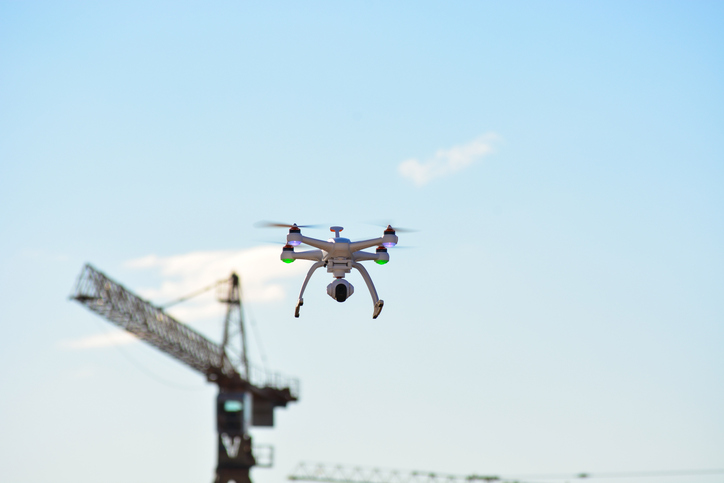Technology—from tablets, to drones, to lasers—is changing how work is done in construction. The data gathered at the jobsite can help make more informed decisions, improving productivity, safety and the bottom line.
Specifically looking at devices such as phones and tablets, Gartner says worldwide device shipments will increase 2.1 percent in 2018, with two markets expected to grow the most: mobile phones and premium ultramobile market.
Further, the technology that is available today is more intelligent than the technology from the past. For instance, ABI Research says we are now entering an era where devices can see rather than simply respond to touch.
Security features such as face identification is one early example of the confluence of computer vision, artificial intelligence (AI) and machine learning.
This type of intelligence can help improve processes at the construction jobsite, and will continue to evolve in the future, demonstrating how emerging solutions can be applied to improve construction.
So which technologies are some of the hottest for the construction jobsite? Industry insiders point to drones, lasers, wearables and apps, just to name a few.
Laser and Digital Technologies Improve Quality, Reduce Waste
One of the biggest challenges in the construction industry today is the struggle to fully staff crews. Emerging and existing laser and digital technologies on construction sites can allow for more precise work to take place with fewer workers.
“From laser levels and layout guides to laser measurers, new tools are coming on the market that are more precise and affordable,” explains Russ Gardner, PR specialist, Calculated Industries. “These tools enable a single worker to quickly do the work of two with accuracy.”
While both laser and digital tools have been available for some time, he explains that their widespread availability and lower entrance price points are making their precision available to a growing number in the workforce.
“Now, measurements can be accurate to one thousandth of an inch or a degree, helping improve quality and reduce material waste,” he says.
Equipping employees with such tools will help them build better and faster, and taking a systematic approach to planned replacement of existing old technology with the new technology can be a cost-effective approach.
As an example, an old analog measuring wheel breaks. When it is time to replace it, upgrade with new advanced tools with digital displays and basic dimensional calculations. “This approach will not strain budgets, but still equip employees to work smarter,” says Gardner.
Finally, he recommends using part of a weekly safety meeting to show employees how to properly use a tool with online videos. This will help ensure proper and safe use of the new technology, as well as make sure the tools are used to their full potential.
 Drones Improve Speed, Precision
Drones Improve Speed, Precision
Another “hot” technology for the construction jobsite is drones. This can help improve surveying and other processes on projects.
IDC anticipates that robotics and drones will grow at a rate of 25.4 percent between 2017 and 2021. What’s more, enterprise drones will increase its share of overall spending with a five-year growth rate of 36.6 percent. Construction is one of the industries that will see the largest drone spending this year.
Ryan Liss, marketing specialist, Explorer Software, echoes this sentiment. He believes that drones, along with the use of wearable technology, will have some of the biggest impacts on the construction industry today.
“Drones allow companies to survey the work site, improving the speed and precision of their projects,” he says. “Drone usage allows quick and accurate inspections in areas that are difficult to see.”
Today, drones can be outfitted to mark global positioning system (GPS) locations or take an infrared picture of a concrete wall to examine possible defects. This allows construction companies to more accurately see projects, plan accordingly, and quickly adjust as the project moves forward.
Wearables Improve Employee Safety
When it comes to wearable technology, a worker can be outfitted with a biometric system that tracks heartrate so companies can prevent exhaustion. Wearable technology can increase both the safety and security of the workers along with their efficiency.
Liss says this can include a vest that can detect the temperature of a worker and cool them down when needed or a boot that detects when a worker slips and falls.
“The scope of wearable technology is rapidly increasing. From being able to monitor the vitals of an employee to ensure they don’t overheat to biometrics to keep areas secure, wearable technology is becoming more prevalent,” he continues.
This technology is quickly becoming more common on construction job sites, as the price points are beginning to drop and implementation and training is becoming more affordable and faster.
“With wearable technology, companies will have to first identify what it is they want a technology to improve on the job site and then determine which technology is right for them,” he says.
 Mobile Apps Improve Project Management
Mobile Apps Improve Project Management
Technology and mobile apps specifically for the construction industry also continue to evolve at the same time.
One example comes from Pantera Global Technology, which recently unveiled new features to bring project management functionality to field users. This combines the Planroom and Project Leads with new features for request for information, submittals and daily field report modules.
This type of app will help with project management and bid management in the construction industry, bringing data right out to the jobsite.
As another example, Helix Steel unveiled a new Web-based tool to calculate savings. The calculator allows customers to input details about their projects and obtain potential savings that could be achieved by replacing existing rebar and welded wire mesh with Helix Steel’s Helix Micro Rebar product.
In this tool, immediate cost and savings are included, such as reinforcement material costs, labor savings, project time savings, and reduction in steel used and carbon dioxide emissions.
When it comes time to put a strategy in place and implement all these new digital technologies, Liss of Explorer Software recommends understanding what the technology can do and then see how you can turn that to your advantage.
At the end of the day, all of this new technology will help construction companies improve business out at the jobsite, enabling workers to leverage data and make informed decisions.
Join over 32,000 industry peers who receive construction industry news and trends each week. Subscribe to CONEXPO-CON/AGG 365.












